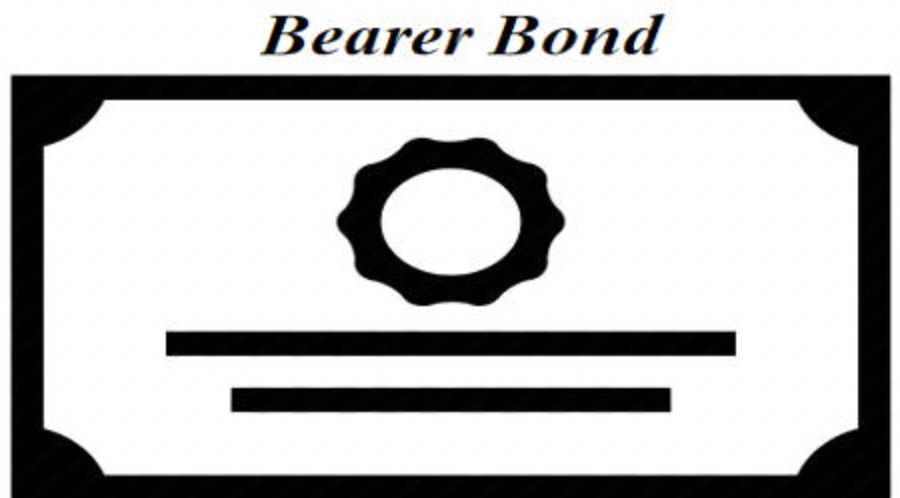
Daniel Rogers
Sep 01, 2022 17:01
Phantom stock. Unusual moniker, eh? Phantom stock, sometimes known as "shadow stock" or "ghost shares," allows employees to share the company's riches and success. Companies accomplish this by giving employees a share in their equity and a retirement plan to ensure they will have sufficient funds later.
Historically, public firms mainly employed phantom shares to create cash for executives with stock options. It has become more common in the private sector as a replacement for stock awards and other forms of compensation.
A software engineering company conducted a case study with $28 million in revenue and 85 employees. They desired to introduce phantom stock options to reduce turnover, boost income, and attract more qualified candidates.
At the end of the year, the company had grown by 50 percent, and the problem with staff turnover had been resolved. Additionally, the corporation became more competitive for talent.
Before you distribute phantom shares to your employees, you should consider several factors, such as how they function and the tax ramifications.
This article will explain phantom shares, how they vary from other stock forms, and how to establish them.
Phantom stock is an employee benefit in which certain employees enjoy stock ownership benefits without receiving actual stock. It is worth money like actual stock; its value grows and decreases with the firm's actual stock (or its market value if the company is not publicly traded). Profits are distributed to employees after a predetermined period.

Phantom stock, also known as shadow stock, simulated stock, or phantom shares, is granted as a reward for hard work and longevity. Stock Appreciation Rights are one type of phantom stock.
There is no definitive explanation of phantom stock or how businesses use it. The term can be applied to any benefit that requires time to develop. Typically, the award is for a specified number of units, or phantom shares, whose value follows that of the company's actual shares, increasing as the company's value increases and decreasing as its value decreases.
A plan charter governs each phantom stock plan. This document specifies the vesting schedule. If there are goals or tasks that individuals must complete to vest, the charter specifies what they are and what they will earn. It also specifies any voting rights. The charter will specify how this is accomplished if the phantom stock can be converted to actual business shares upon distribution.
Two types of phantom stock plans predominate. "Stock value is not included for compensation in "appreciation only" plans. They may only pay out the value of any increase in the company's stock price over a specified period beginning on the date the plan is issued—plans with a "full value" payout of the value of the underlying stock and any appreciation.
Both types of plans are similar to traditional nonqualified plans in that they can be discriminatory and are typically subject to a substantial risk of forfeiture that ends when the benefit is paid to the employee. At this point, the employee recognizes income for the amount paid, and the employer can deduct the amount.
Phantom stock may be fictitious, but it can nevertheless pay dividends and experience market fluctuations like its genuine counterpart. The monetary value of the phantom stock is eventually dispersed to the participating employees.
Phantom stock, also known as synthetic equity, can be put to any purpose the company deems fit because it is not tied to any actual shares of stock. Phantom stock can also be altered at the discretion of the leadership.
Phantom stock meets the requirements for a deferred compensation scheme, and phantom stock programs must comply with Internal Revenue Service (IRS) section 409 criteria (a). An attorney must review the plan, and all essential facts must be outlined in writing.
Companies typically use "appreciation only" or "full value" phantom stocks.
An appreciation stock prevents beneficiaries from acquiring the phantom stock's existing value. Instead, recipients receive any profit that the phantom stock could generate over a specific period, such as stock price appreciation.
If employee "A" were to receive 1,000 shares of phantom stock with a value of $20 per share, the current value of the company's shares would be $20,000. According to the terms of the agreement, the employee must remain with the company for five years to receive the full benefits of the phantom stock arrangement. This era is referred to as the "vesting" period.
After the vesting period, the price per share of the company's stock increased to $40. Employee "A" would receive the difference between the $20 per-share value of the stock on the date the agreement was reached and the $40 per-share value on the date they became entitled to any profits from the shares. In this instance, the appreciation is $20 per share, resulting in a profit of $20,000 for the phantom stockholder.
A full-value phantom stock contract provides the beneficiary with the present value and any stock price appreciation once the due date is reached.
In this example, employee "A" would receive the $20 per-share price rise after five years, and they would also receive the share price appreciation that has occurred since the transaction began.
Providing employees with company stock can give numerous benefits, including the motivation to work more so that the firm is successful and stock values rise. This system increases company loyalty, and employees who feel invested are less inclined to seek new opportunities elsewhere.
Nonetheless, even with these incentives, a phantom stock may be a preferable option for employers in certain circumstances:
When legal concerns exist.
When the corporation refuses to issue new shares.
To avoid diluting shares, distributing them to several employees could affect voting control.
Providing phantom stock enables the corporation to reward employees for their excellent work without dealing with the above issues.
Typically, phantom shares motivate senior management to achieve better results. The number of shares granted will depend on the leader's position within the firm and the performance of his or her team. The long-term benefits, with payouts occurring after two, three, or five years, depend on the company's chosen time frame. It might also be reliant upon achieving a specific objective or task.
Phantom stocks effectively incentivize retaining key personnel during the vesting period. They enhance worker productivity, and the beneficiary also profits from appreciating the phantom stock price.
This personnel is not required to acquire phantom stock shares on the open market, as is the case for average stockholders. Employees are instead granted phantom shares, with no money changing hands. This is an enormous benefit for employees, who receive a part of the stock's profits without paying for it. Shadow stocks are not the same as ordinary business equities. Therefore, this arrangement does not reduce the value of actual firm investors' shares.
Employers benefit from company control over phantom stocks. In a conventional phantom stock charter or contract, the corporation can specify the shape of the agreement. It can regulate the level of equity involvement in the form of dividends given to employees. A phantom stock agreement might also include a condition that "forfeits" any phantom stock benefits if the employee in issue leaves the company before the stipulated vesting completion date.
In a phantom equity arrangement, the firm calls all the shots, and employees have little power or flexibility if the share price declines. Taxes also play a role in phantom stock transactions. Companies must closely adhere to Internal Revenue Service (IRS) tax rule 409A, which restricts a firm's distribution date options. Additionally, it prevents employees and managers from speeding phantom stock payouts if they believe the company may be experiencing significant financial difficulties.
Termination before the deal's activation, even for reasons beyond the employee's control, precludes them from collecting any phantom stock cash benefits.
Companies that use phantom stock plans may incur additional expenses, particularly if an external accounting firm is required to complete a stock valuation analysis.
A phantom stock unit's worth may be determined by the value of a total share of firm stock, or it may be based solely on the gain in value over a predetermined period. It is commonly known as a stock appreciation right if based only on the stock's appreciation. The value may be specified, determined by an explicit written formula, or established by an independent appraisal.
The valuation technique should incorporate changes that the parties feel are reasonable. A firm could, for instance, omit gain or loss linked to the activities or sales of specific divisions. The amount of accrued deferred compensation related to the phantom stock units may be adjusted, along with any deductions for capital invested by shareholders over the plan, any additions for dividends distributed to shareholders during this period, and any other relevant factors.
It is important to note that, as the market value of the firm changes, so does the value of phantom stock units. If the company has a bad year and its share price drops, the phantom stock's value will also fall. Therefore, the phantom stock has no intrinsic locked-in value independent of any vesting plan.
In addition, businesses should be mindful that circumstances outside their control can alter their firm's value if a third-party valuation is used. For instance, legislative increases or decreases in corporation tax rates may result in corresponding increases or declines in cash flow (with all else being equal). Similarly, a significant event such as the coronavirus pandemic influences the market prices of numerous businesses. Regardless of whether they rely on a third-party appraisal, businesses should anticipate the likelihood of such unforeseen variations in value.
The phantom stock plan should indicate what events should trigger a valuation (i.e., what occurrences should entitle the employee to benefits under the plan) and at what specific time the value of the phantom stock units should be calculated.
Typically, the valuation occurs after an occurrence that triggers phantom stock unit payouts in order to determine the number of such payouts. Companies can select their triggers, such as a separation from service, a change in control, a future date, or a predetermined payment schedule. In most circumstances, an employee's firing, death, or incapacity requires an evaluation. In other instances, frequent valuations, such as annually or at a future date, may be required.
Any date designated for measuring the value at a triggering event should, to the extent practicable, be based on realistic considerations consistent with the company's business operations. Once a trigger event has been discovered, the organization must decide whether the value should be established on the day of the event itself alternatively, whether it would be more prudent to go forward or back to the nearest quarter or year-end based on the financial information needed to compute the value.
Here are the six most important factors to consider while creating a phantom stock program:
Before offering phantom equity to employees, you must examine several criteria. Plan the objectives, identify the qualified staff, and establish the equity proportion. Since phantom stocks are a deferred employee compensation plan, companies have the flexibility to amend the plan as needed. Ultimately, a phantom stock program should mirror the company culture you are attempting to develop.
When attempting to determine the value of your business, you can either obtain a professional evaluation or determine the value yourself. Most businesses utilize a formula or one of their main measures (such as EBITDA) to determine the worth of their firm. Just make sure it is not too high. In that case, your stock could be worth more than the company itself.
Many individuals believe the number of phantom shares should equal the number of corporate shares. This is not the case, however. Phantom equity is an employee incentive program connected to the company's valuation and long-term objectives. It intends to motivate employees by tying their performance to the business's success. However, it is not intended to replace business stock. You need simply enough phantom shares to motivate your employees and achieve your short-term objectives.
As indicated earlier in this blog, there are two types of phantom shares. "Only appreciation" and "Full value." You can now determine which form of phantom plan best meets your demands and corporate objectives.
In addition to these two options, you can allow employees to postpone revenue to phantom shares. Using this strategy, the employee will invest a portion of their annual income in phantom stock options.
The majority of corporations plan their phantom stock distributions annually. A one-time upfront award may be the way to go if you wish to thank a long-serving employee who is essential to your ambitions. Some individuals are concerned that this may not be as advantageous as annual incentives over a fixed number of years. However, you may demonstrate gratitude for their contributions to your business by offering them an equal lump sum today.
Regarding their rights, you must safeguard your employees. The design of phantom share agreements must ensure that employees receive the correct tax treatment and the required deferred remuneration. If you are establishing phantom stock agreements, consider them an added benefit to your retention offerings for key personnel.
Phantom shares typically do not pay dividends. Initially, there were no tax ramifications for the award. However, the employer might deduct the payment as ordinary income.
Phantom equity does not erode shareholder value as no actual shares are transferred. An employee cannot become the business's owner, and they have the opportunity to receive cash benefits from the company's value.
Employee Stock Option Plan is the abbreviation for Employee Stock Option Plan. Phantom stock or phantom equity is an employee stock ownership plan (ESOP). While some ESOPs may provide employees with actual shares of stock, phantom stock gives perks that resemble actual shares.
Companies use the phantom equity program to enhance employee motivation and productivity by giving them a stake in the company. It also increases the company's profitability by increasing the value of its stock.
Phantom stock options are the most secure type of ESOPs when uncertainty exists. Risk is negligible, and the employer can modify the terms and conditions at any moment. If the value of the shares does not increase after the vesting period, no payment will be made. In addition, people can utilize this feature to commemorate significant occasions, such as Employee Appreciation Day, by rewarding the staff with phantom shares.

Aug 31, 2022 16:51

Sep 02, 2022 11:28